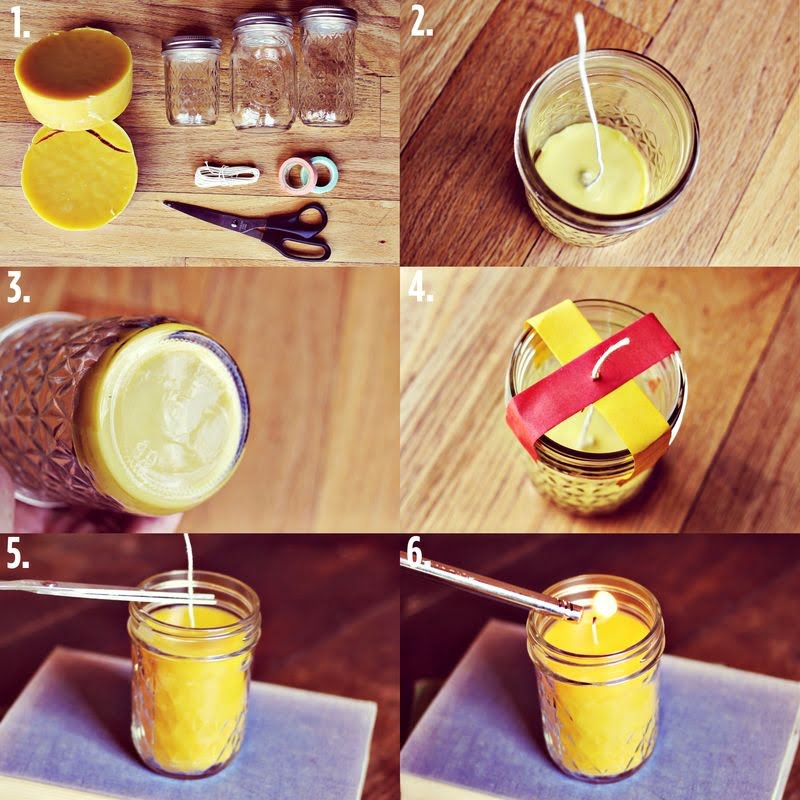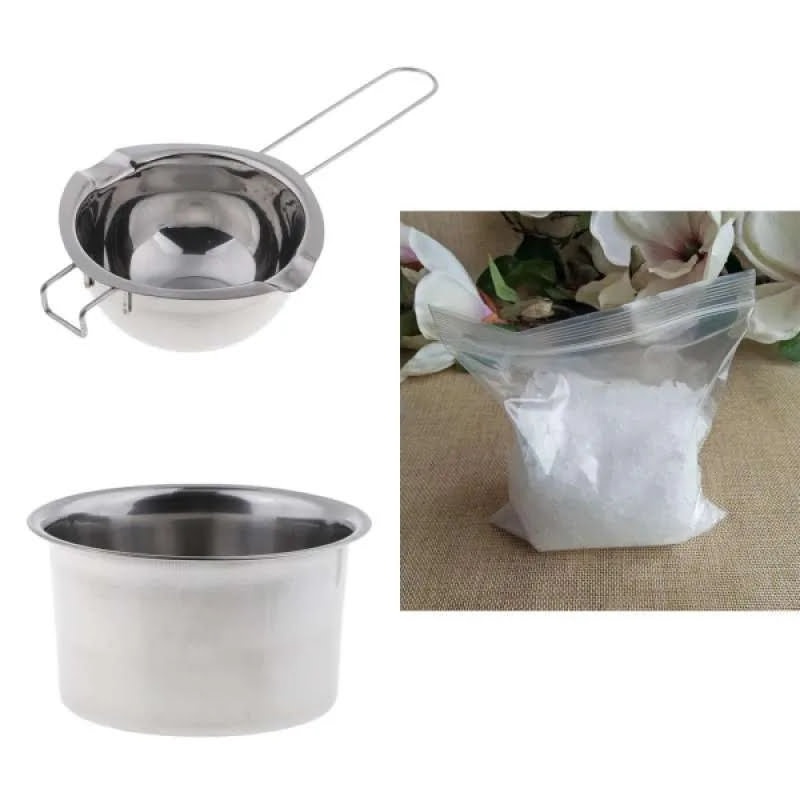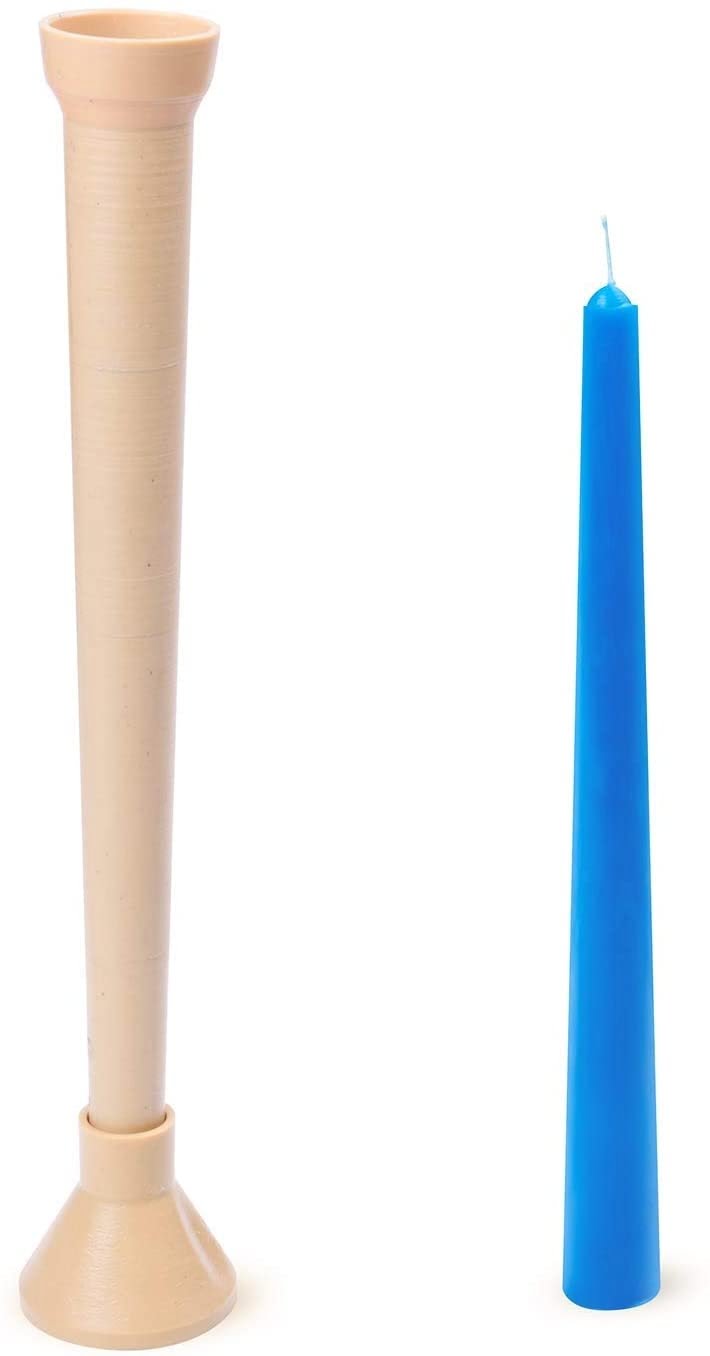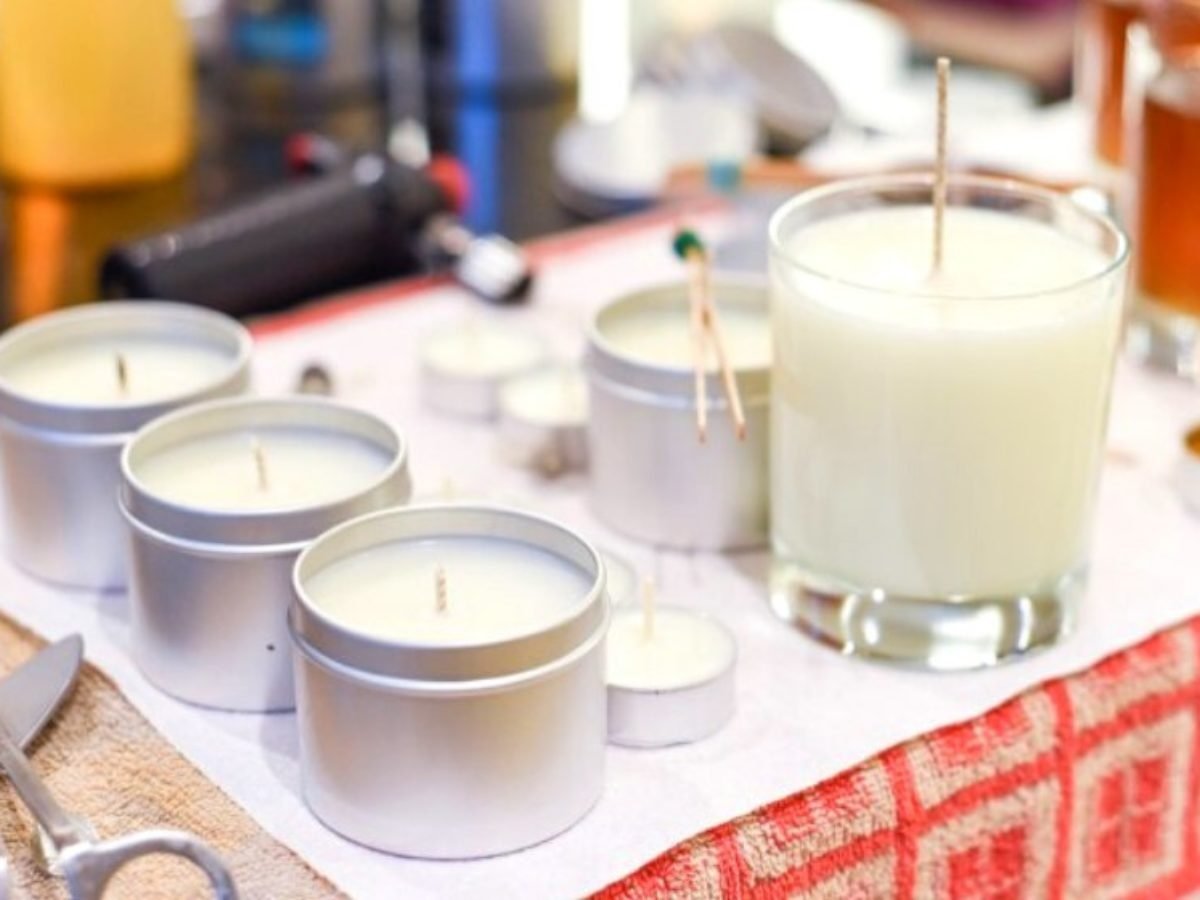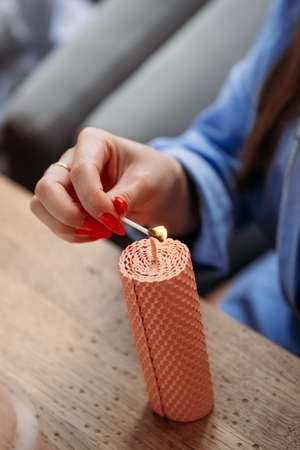Are you a candle making enthusiast looking for the best wick to use for your projects? In the world of candle making, choosing the right wick is crucial to the success of your creation. The perfect wick can make a significant difference in the burn and scent throw of your candles, ultimately enhancing the overall experience for users.
When it comes to selecting the best wick for candle making, there are several factors to consider. From understanding the impact of wick size on burn and scent throw to matching the wick size to the diameter of the candle container, choosing the right wick involves careful consideration and testing. But with so many different types of candle wicks and their unique characteristics, how do you know which is the best option for your specific project?
In this article, we will explore everything you need to know about choosing the best wick for your candle making endeavors. From understanding the significance of wick material to providing top recommendations for different types of candles, we will help you navigate through the process of finding that perfect wick for your next candle making project.
Whether you are a beginner or an experienced chandler, this comprehensive guide will equip you with all the information you need to make an informed decision when it comes to selecting the best wick for your candles.
Factors to Consider When Selecting a Wick for Candle Making
When it comes to candle making, choosing the right wick is essential for creating a high-quality and efficient candle. There are several factors to consider when selecting a wick for your candle making project, all of which can have a significant impact on the burn, scent throw, and overall performance of the candle.
Wax Type
The type of wax you are using for your candle will play a significant role in determining the best wick for your project. Different waxes have different melting points and densities, which can affect how the wick burns and how well it releases fragrance. For example, soy wax typically requires a larger wick size compared to paraffin wax due to its lower melting point.
Container Size
The diameter of the container in which the candle will be poured also has an impact on the choice of wick. A larger container will require a larger wick to ensure that the candle burns evenly and efficiently. It’s important to match the size of the wick to the diameter of the container to achieve optimal burning conditions.
Fragrance Load
If you are adding fragrance oils or essential oils to your candles, this factor should also be taken into consideration when selecting a wick. A higher fragrance load may require a larger or special type of wick to ensure that the scent is effectively dispersed throughout the room when the candle is burned.
Taking these factors into account when choosing a wick for your candle making project can help you create candles that burn evenly, release fragrance effectively, and provide an enjoyable experience for those who use them. Experimenting with different types and sizes of wicks is often necessary until you find the perfect fit for your specific candle-making needs.
Different Types of Candle Wicks and Their Unique Characteristics
When it comes to choosing the best wick for candle making, it’s important to understand the different types of candle wicks and their unique characteristics. The type of wick you choose can significantly impact the burn and scent throw of your candles, so it’s crucial to select the right one for your specific needs.
One common type of candle wick is the cotton wick. Cotton wicks are popular because they are affordable and easy to find. They are also known for their clean and consistent burn, making them a great choice for many types of candles. However, it’s important to note that not all cotton wicks are created equal, so it’s essential to consider the specific characteristics of the cotton wick you’re using.
Another popular type of candle wick is the wooden wick. Wooden wicks have become increasingly popular in recent years due to their ability to create a crackling sound reminiscent of a fireplace. Wooden wicks also tend to create a wider flame than traditional cotton wicks, which can lead to better scent throw in certain types of candles. However, wooden wicks may require different considerations when it comes to sizing and testing for optimal performance.
In addition to cotton and wooden wicks, there are also hemp and paper-based wicks available on the market. Each type of candle wick has its own unique characteristics that can impact the burn, scent throw, and overall performance of your candles.
When choosing the best wick for your candle making projects, it’s important to consider factors such as burn time, flame height, and fragrance release, among others. Experimenting with different types of candle wicks can help you determine which one is best suited for your specific needs and preferences.
The Impact of Wick Size on the Burn and Scent Throw of a Candle
When it comes to candle making, one of the most crucial elements to consider is the size of the wick. The wick size plays a significant role in determining how your candle will burn and the strength of its scent throw. Choosing the right wick size can make all the difference in creating a high-quality and long-lasting candle.
There are several factors to take into account when selecting the appropriate wick size for your candles. These include the diameter of the candle container, the type of wax being used, and the desired burn time. By carefully considering these factors, you can ensure that your candles burn evenly and emit a pleasing aroma.
To help you understand further, here are some considerations for choosing the right wick size:
- Diameter of candle container: The size of your candle container will dictate what wick size is best suited for your project. A larger diameter will require a thicker wick to provide enough fuel for an even burn, while a smaller diameter may only need a thinner wick.
- Type of wax: Different types of wax have varying melt points and densities, which can impact how they interact with different wick sizes. Be sure to consider the specific characteristics of your chosen wax when selecting a wick.
The right wick size is essential for achieving optimal burn performance and scent throw in your candles. Take the time to evaluate these factors before choosing a wick to ensure that you are creating high-quality candles that meet your expectations.
How to Match the Wick Size to the Diameter of the Candle Container
Choosing the right wick size for your candle container is crucial in achieving a clean and even burn, as well as maximizing the scent throw of your candles. The diameter of the candle container directly impacts the performance of the wick, so it’s important to match the two properly.
Factors to Consider
When matching the wick size to the candle container diameter, there are several factors to consider. These include the type of wax used, the fragrance load, and any additional additives present in the wax. Each of these factors can influence how a particular wick will perform in a given container size.
Testing and Troubleshooting
Before settling on a specific wick size for your candle container, it’s essential to conduct testing. This involves burning sample candles with different wick sizes and observing factors such as burn rate, flame height, and soot production. Troubleshooting may be necessary if you encounter issues such as tunneling (uneven wax melt) or drowning (wick extinguishing due to too much wax).
Matching Tips
To match the wick size to the candle container diameter effectively, consider using online resources or consulting with experienced candle makers who may have recommendations based on similar projects. Additionally, some manufacturers provide guidelines for specific wick sizes suitable for their candle containers. By taking these tips into account, you can ensure that you select an appropriate wick size for your candle making project.
The Significance of Wick Material in Candle Making
Candle making is a delicate craft that requires attention to detail, especially when it comes to choosing the right wick for your project. One of the most crucial factors to consider when selecting a wick is the material from which it is made. The wick material plays a significant role in determining how the candle will burn, its longevity, and the overall quality of the finished product.
The most common materials used for making candle wicks are cotton, wood, and hemp. Cotton wicks are widely popular due to their affordability and reliability. They create a stable and consistent flame, making them suitable for various types of candles. Wood wicks are known for producing a crackling sound reminiscent of a fireplace, adding an element of coziness to the candle-burning experience. Hemp wicks are an eco-friendly option known for their slow burning and minimal soot production.
Choosing the right wick material depends on several factors, including the type of wax being used, the diameter of the candle container, and personal preference. For example, cotton wicks are suitable for paraffin wax candles, while wood wicks work well with soy or beeswax candles. It’s essential to consider these factors when deciding which type of wick material is best for your specific candle making project.
| Wick Material | Characteristics |
|---|---|
| Cotton | Affordable, stable flame |
| Wood | Produces crackling sound, adds coziness |
| Hemp | Eco-friendly, slow burning, minimal soot production |
Tips for Testing and Troubleshooting Wick Performance in Candles
When it comes to creating the perfect candle, choosing the right wick is essential. However, even after careful consideration and selection, testing and troubleshooting the wick’s performance is crucial to ensure that your candles burn properly and emit a pleasant scent. There are several factors to consider when testing and troubleshooting wick performance, which can ultimately impact the overall quality of your candles.
One important factor to consider when testing the wick’s performance is its size. The size of the wick can greatly influence the burn and scent throw of the candle. It’s essential to test different wick sizes to determine which one works best for your specific candle-making project. Additionally, matching the wick size to the diameter of the candle container is also an important consideration, as this can impact how evenly and efficiently the candle burns.
Another crucial aspect to consider when testing and troubleshooting wick performance is the material of the wick itself. Different materials, such as cotton or wood, can produce different burning characteristics in candles. Testing various types of wicks with different materials can help you determine which one is best suited for your desired outcome.
Lastly, it’s important to test your chosen wick under various conditions to troubleshoot any potential issues that may arise during burning. This could include factors such as drafty environments, different types of wax, or changes in fragrance concentrations. By identifying and addressing any issues that may arise during testing, you can ensure that your final product meets your standards for quality.
| Wick Type | Recommended Candle Type |
|---|---|
| Cotton Core Wicks | Soy Wax Candles |
| Wooden Wicks | Beeswax Candles |
| Zinc Core Wicks | Paraffin Wax Candles |
Top Recommendations for the Best Wicks for Different Types of Candles
When it comes to selecting the best wick for candle making, there are various factors to consider, such as the type of wax used, the diameter of the candle container, and the desired burn and scent throw. Different types of candles require different wicks to ensure optimal performance. Here are some top recommendations for the best wicks for different types of candles:
- Cotton Core Wicks: These are a popular choice for many types of candles, including paraffin, soy, and beeswax. They come in various sizes and are known for their clean burn and minimal soot production.
- Wooden Wicks: Ideal for natural wax candles such as soy and beeswax, wooden wicks offer a unique crackling sound when burned. They also provide an excellent hot throw, releasing fragrance effectively.
- Paper Core Wicks: These wicks are suitable for votive and container candles made with paraffin or soy wax. They offer a consistent and controlled flame that helps with even wax consumption.
It’s important to match the wick size to the diameter of the candle container to ensure an even burn and maximum scent throw. A wick that is too small may result in tunnelling, where the wax burns down the center of the candle, while a wick that is too large can cause smoking and soot buildup.
When it comes to choosing the best wick material for candle making, natural materials like cotton and wood are often preferred due to their clean-burning properties. However, each type of material has its own unique characteristics that may work better with specific types of wax or fragrance oils. Testing and troubleshooting different wick materials can help determine which is best suited for your candle making projects.
Conclusion
In conclusion, selecting the right wick for your candle making projects is crucial to achieving the desired burn and scent throw of your candles. It is essential to consider factors such as wick size, material, and the diameter of the candle container when choosing a wick. Understanding the different types of candle wicks and their unique characteristics can also help in making an informed decision.
When it comes to determining the best wick for candle making, there is no one-size-fits-all answer. The best wick will depend on various factors such as the type of wax being used, the fragrance load, and the container size. It may require some experimentation and testing to find the perfect wick for your specific candle making project.
To ensure success in your candle making endeavors, it is important to test and troubleshoot the performance of different wicks. This process can help in identifying any issues with burn quality or scent throw, allowing for adjustments to be made accordingly. As you continue to gain experience in candle making, you will develop a better understanding of which wicks work best for different types of candles.
Frequently Asked Questions
What Is the Best Wick to Use When Making Candles?
The best wick to use when making candles depends on the type of wax, size of the candle, and desired burn time. Cotton wicks are a popular choice for their clean burn and ability to work with various types of wax.
How Do I Choose a Candle Wick?
When choosing a candle wick, consider factors such as the diameter of the candle, type of wax being used, and desired burn time. A larger diameter candle may require a thicker wick, while soy wax may work best with a different type of wick than paraffin wax.
What Is the Cleanest Wick for Burning Candles?
The cleanest wick for burning candles is often considered to be cotton wicks. They produce minimal soot and smoke compared to other materials like zinc or lead. It’s also important to trim the wick before each use to keep the burn as clean as possible.

Welcome to my candle making blog! In this blog, I will be sharing my tips and tricks for making candles. I will also be sharing some of my favorite recipes.

